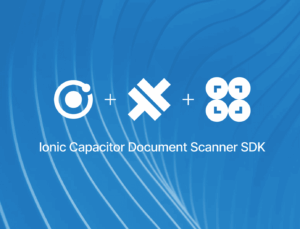Kotlin: A smooth transition from Java
When Android was introduced in 2008, mobile developers had little choice but to use Java to build their Android apps. Given that one aim was to snatch market share away from competitor Apple, it made sense for Google to pick it as the primary language for the new, open mobile operating system. For one, Java runs on any device with a Java Virtual Machine (JVM), ensuring broad compatibility. For another, it already had a large developer community. However, with Java getting on in years, it was only a matter of time until a more modern programming language would take center stage.
It was JetBrains, creators of the famous integrated development environment IntelliJ IDEA, who presented a viable Java alternative for developing Android apps: Kotlin (named after Kotlin Island near St. Petersburg, in analogy to the Indonesian island Java) is a cross-platform, statically typed programming language that is interoperable with Java, can call all Java libraries, and compiles to Java bytecode.
Kotlin was declared the official language for Android app development by Google in 2019. It is currently the most widely used language for the platform.
Kotlin’s compatibility with Java enables developers to smoothly transition their existing apps from one language to another. Kotlin and Java can even coexist in the same codebase, with Kotlin code being able to call Java code and vice versa.
Although Kotlin is closely associated with Android, it can be used to write code for a variety of platforms, including iOS. The Kotlin Multiplatform framework uses a common codebase for an app’s business logic, which can then be used by the different platform-specific modules.
To create the UI for multiple platforms, developers can use Compose Multiplatform.
As for the language itself, the benefits of Kotlin include:
- Conciseness and readability: Kotlin’s strength lies in its concise, expressive syntax, which minimizes boilerplate code. The language promotes clean, readable code, making it easier for developers to understand and maintain their projects.
- Null safety: The inclusion of nullable and non-nullable types, along with safe calls and the elvis operator, enhances the reliability of Kotlin code. By making nullability explicit in the type system, Kotlin minimizes runtime crashes associated with null references.
- Extension functions: These empower developers to augment existing classes with new functions without having to alter their original code structure, enhancing code modularity and extensibility.
- Coroutines for asynchronous programming: Kotlin’s native support for coroutines simplifies asynchronous programming, a crucial aspect of modern application development. Coroutines enable developers to write asynchronous code in a sequential and intuitive manner, improving code readability and maintainability.
Swift: Safety and performance are key
Similarly to how Kotlin was a modern answer to Java, Swift succeeded Objective-C as the go-to language for iOS and macOS developers.
Developed in 1984 and later adopted by Apple as the standard programming language for macOS, Objective-C strongly resembles C. As mobile app development was gaining steam in the 2010s, Apple needed a programming language tailored to their ecosystem with modern features developers had come to expect from the likes of Ruby or Python. This led to the creation of Swift, which Apple developed in collaboration with the open-source community and with a particular focus on safety and performance.
Like Kotlin, Swift is statically typed, reducing the likelihood of runtime errors related to type mismatches and so enhancing code reliability. It also provides automatic memory management through Automatic Reference Counting (ARC), which helps prevent memory leaks and related crashes.
Additional benefits of Swift include:
- Conciseness and readability: Like Kotlin, Swift features a concise and expressive syntax that fosters code readability and maintainability. It incorporates modern language features, including optionals for handling nil values and guard statements for robust error handling, contributing to the creation of safer and more resilient code.
- Performance: Performance is a pillar of Swift’s design philosophy. The language is meticulously engineered to be fast and efficient, providing developers with essential tools like Grand Central Dispatch for concurrent programming and optimization techniques that capitalize on underlying hardware capabilities. These characteristics make Swift an ideal choice for resource-intensive tasks, gaming applications, and other scenarios demanding high performance.
- Apple ecosystem integration: Deeply rooted in the Apple ecosystem, Swift seamlessly integrates with Cocoa and Cocoa Touch frameworks. This integration gives developers a powerful and expressive tool that facilitates the creation of robust applications tailored to the iOS and macOS platforms.
- Platform integration and readability: iOS and macOS developers benefit from Swift’s commitment to safety, performance, and modern syntax. The language’s integration with Apple’s ecosystem and its focus on readability make it a compelling choice for those dedicated to the Apple platform. Although multi-platform development in Swift is not as straightforward as with Kotlin, the language’s ongoing evolution is increasing its suitability for cross-platform development.
Cross-platform development with Kotlin and Swift
Google and Apple’s chosen programming languages are equally powerful tools for building native mobile apps. But when it comes to cross-platform development, Kotlin has the edge.
Kotlin Multiplatform enables code sharing across platforms like Android, iOS, and backend systems. The language’s interoperability with Java means developers can use existing Java libraries, facilitating Android app development. While its shared-code approach lets developers write platform-specific code whenever necessary, it also keeps most of the codebase platform-independent.
Additionally, Kotlin/Native allows native compilation, extending its reach beyond the JVM to support standalone executables and compatibility with platforms like iOS.
On the other hand, Swift is tailor-made for the Apple ecosystem, serving as the primary language for iOS, macOS, watchOS, and tvOS development. SwiftUI, a declarative UI framework, simplifies the creation of user interfaces across Apple platforms.
Conversely, Swift is less suitable for development on other platforms. While there have been community initiatives to create cross-platform libraries for Swift, such as Swift for TensorFlow, these efforts are less mature and widespread than Kotlin’s multiplatform support.
Kotlin vs. Swift: Which is the right choice for your project?
Choosing between Kotlin and Swift boils down to these key questions:
- Is your top priority Android or iOS?
- Do you want to develop your app for more than one platform?
Developers primarily targeting Apple’s ecosystem should choose Swift, whereas native Android development calls for Kotlin as the language of choice.
Due to its interoperability with Java, Kotlin can also function as a cross-platform development tool. However, it should then be compared to other popular frameworks like Flutter, React Native, and Xamarin, which all have their benefits and drawbacks.
This sheer diversity of languages and frameworks for mobile app development might seem daunting at first, but if you take all aspects of your project into account, you’ll be sure to arrive at the correct choice.







